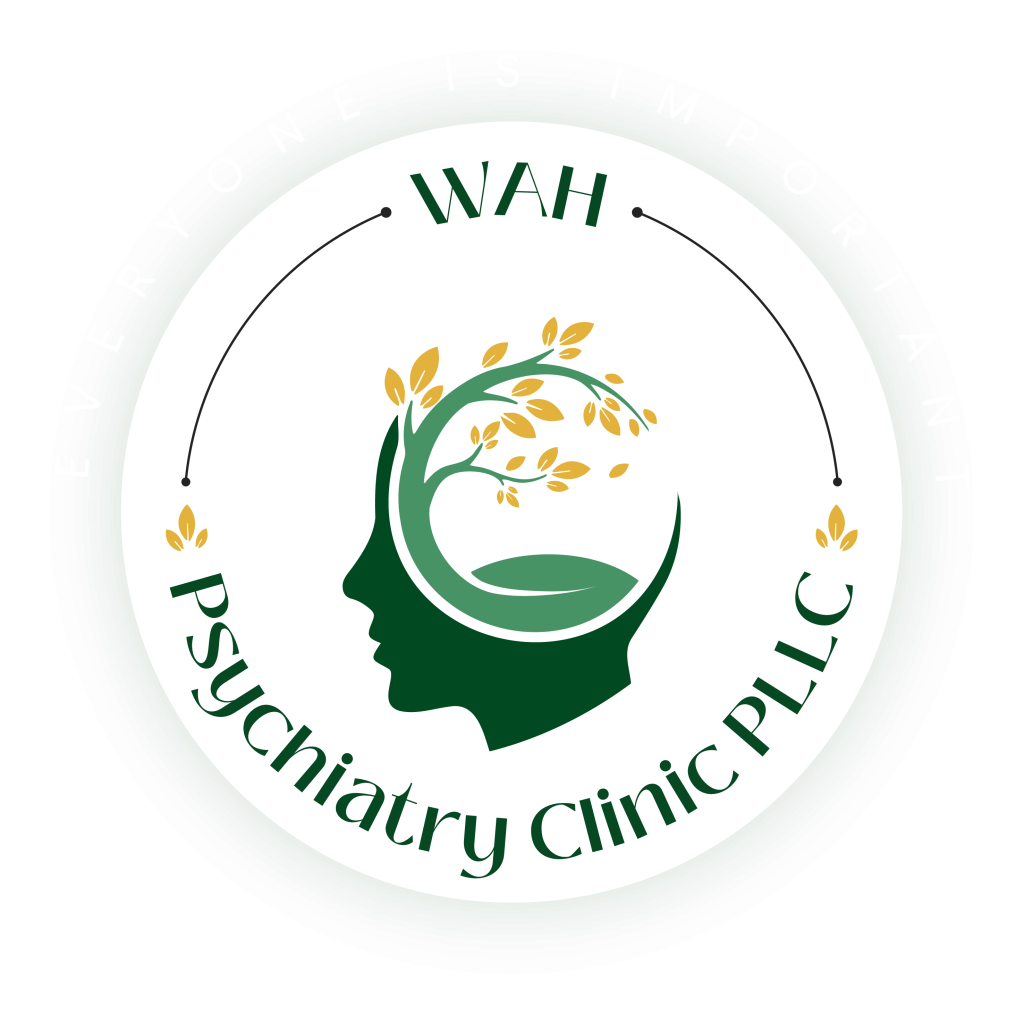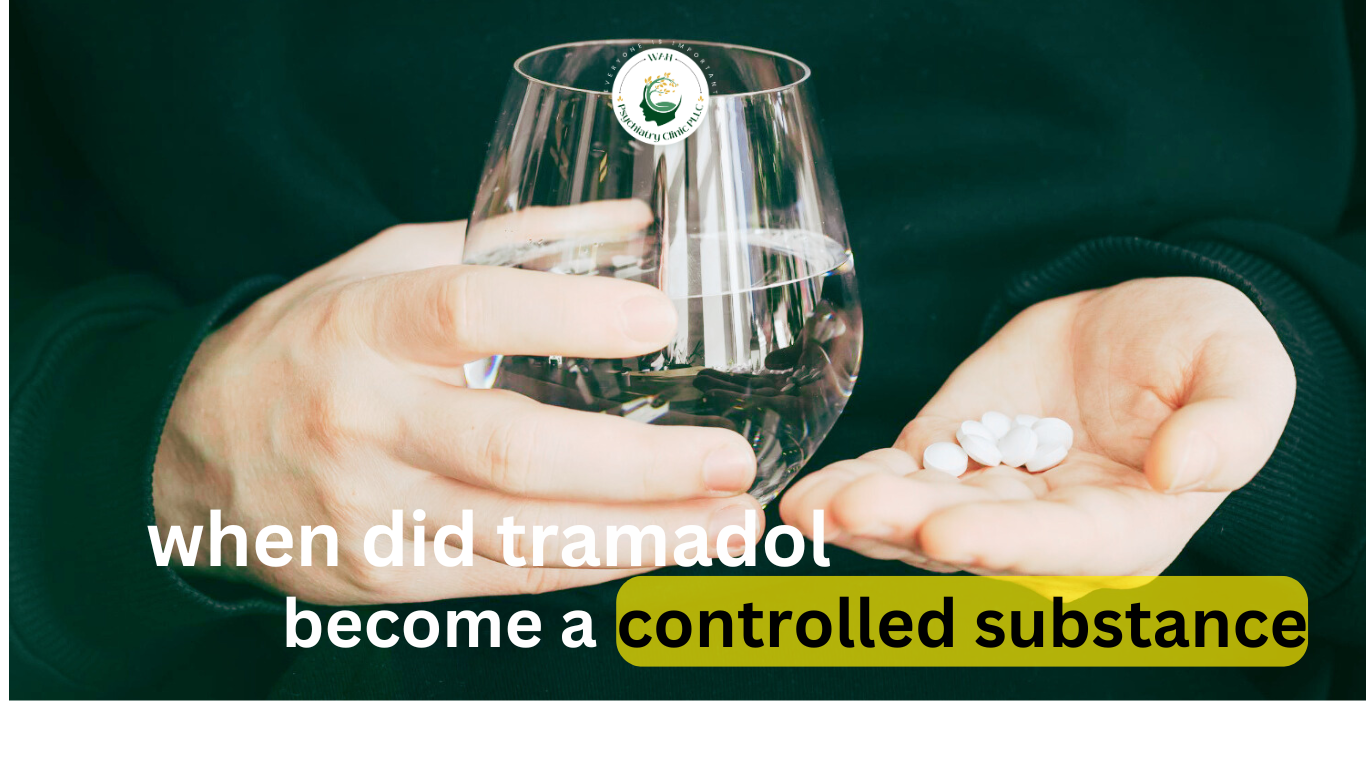Is tramadol a controlled substance? People often ask this since it’s a painkiller, and its oversight is in discussion. Tramadol treats moderate to severe pain, but its status changed due to misuse concerns.
WAH Psychiatry Clinic treats anxiety to psychosis. Our experts also help with depression. Contact us for additional details.
Next, we’ll examine when Tramadol became a controlled substance and why. We’ll answer typical questions about Tramadol’s drug group, too.
What Is Tramadol?
Tramadol is a synthetic opioid painkiller. It is used when other pain relief methods fail. Doctors often prescribe it for:
- Post-surgery pain
- Injuries
- Severe chronic pain
Tramadol alters how the brain and nerves perceive pain. It offers relief within an hour.
Researchers developed tramadol in the 1970s. In the 1990s, they introduced it as a safer pain reliever. It wasn’t initially a controlled substance.
Medical experts touted its lower risk of addiction than other narcotics. This uncontrolled status reflected the drug’s safety.
It set it apart from traditional painkillers. However, research later raised concerns about the potential for misuse.
Controlled Substances
Laws recognize certain drugs as controlled substances due to their risks. The DEA oversees and classifies these harmful, addictive drugs. It manages their use and distribution.
Drug Scheduling
The DEA uses schedules to classify controlled substances. These schedules range from Schedule I to Schedule V:
- Schedule I: Tightest control
- Schedule II: High potential for abuse
- Schedule III: Moderate to low potential for physical and psychological dependence
- Schedule IV: Lower potential for abuse relative to Schedule III
- Schedule V: Lightest control
The classification depends on two main factors:
- How the drug is used medically
- How easy it is to misuse the drug
Why Is Tramadol a Controlled Substance?
Tramadol wasn’t always viewed as a risky drug. Doctors prescribed it freely, not worrying about its abuse.
However, people began noticing Tramadol’s addictive effects. That got healthcare pros and rule-makers nervous.
In August 2014, the DEA classified Tramadol as “Attention, Risky,” or Schedule IV under the Controlled Substances Act.
They did this to prove that Tramadol can hook people. It can cause withdrawal troubles like other opioids.
Is Tramadol a Controlled Substance?
Tramadol’s controlled status stems from its abuse potential. The DEA knows this risk. But they classify it as Schedule IV. This means it is less dangerous than Schedule II or III drugs. Although careful use is recommended. Rules on Schedule IV substances like Tramadol’s prescribing and sharing are pretty strict.
What Schedule Is Tramadol?
Tramadol is a Schedule IV controlled substance, like Xanax and Valium. Its controlled status is due to its less likely abuse compared to more potent drugs, but it still needs watching. While tramadol can help to lessen pain, its possibility of misuse requires careful check-ups.
Are Tramadol Narcotic?
Yes, tramadol is seen as a narcotic for pain relief. It is an opioid analgesic. Its effects are often less potent than other opioids.
Moderate to severe pain can disrupt daily life. Tramadol, however, helps by targeting your brain’s pain pathways. It soothes pain by changing how the nervous system reacts. Tramadol helps. It relieves pain and restores normalcy to users.
Its classification implies a lower likelihood of addiction or misuse compared to more robust variants.
It is vital to have close medical supervision when taking tramadol. This strong medicine may cause side effects and interact with other drugs. Consult your doctor before use.
How Is Tramadol Prescribed and Used?
Doctors must follow the rules:
- Prescriptions: Doctors must follow specific guidelines. They need to confirm tramadol is necessary and safe.
- Refills: The number of refills is limited. Often, prescriptions must go directly to pharmacies.
- Monitoring: Doctors and pharmacies must track tramadol use to prevent abuse.
Tramadol in Pain Management
Despite being controlled, tramadol remains vital for pain treatment:
- It’s commonly used for conditions like arthritis.
- Tramadol helps manage moderate pain after surgery.
- It relieves injuries when other meds fall short.
Tramadol should be used with care, and directions should be followed.
Responsible Use Matters
Given its controlled status, responsible use of tramadol is crucial. Misuse can lead to severe issues like addiction and overdose. Watch for these signs:
- Taking higher doses or using it too often can lead to dependence.
- Wanting tramadol without needing it might indicate addiction.
- Feeling anxious or sick without tramadol suggests dependence.
Conclusion
To sum up, is tramadol a controlled substance? Yes, It is.
Tramadol’s shift towards regulation in the U.S. highlights the fine line between relief and risk found in prescription medications. They could be crucial for pain management, yet they also carry risks. Today, its regulated status helps keep usage safe.
If you’re considering Tramadol for a patient or a healthcare professional planning on prescribing it, understanding its standing and its reasons is very important.
Have questions about Tramadol? Feel free to ask a healthcare professional. The rules around Tramadol are for your safety. It helps ensure that this strong medicine is used correctly and securely.
FAQs
Q: Is tramadol a controlled drug?
Yes, tramadol is indeed a regulated drug. Misuse and dependence make it so. It falls under the Schedule IV controlled substance category. This means it needs careful monitoring and regulation.
Q: Is Tramadol an opioid medication?
It does, though Tramadol’s potency is less intense. Despite its weakness, it can still pave the path to dependency or misuse, particularly with prolonged or hefty use. Hence, it’s a regulated drug.
Q: How can I get prescribed tramadol?
To get a tramadol prescription, you must visit a doctor. This expert will examine your health status and decide if tramadol fits you. They’ll review your pain status, medical past, and misuse risk.
Q: Can tramadol be called into pharmacy?
Yes, they certainly can. You can call the pharmacy to place a tramadol order. But remember, due to its regulated status, there are strict guidelines. These are meant to confirm the prescription’s validity and proper usage.
Q: Can tramadol be consumed every day?
Using tramadol each day could be dangerous as it might result in reliance or addiction. Always adhere to your doctor’s instructions on its consumption.





No comment